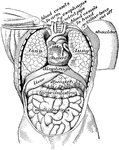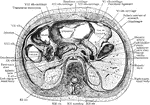Clipart tagged: ‘organs’

Digestive Organs of a Dog
Stomach, liver, pancreas, and duodenum of a dog. Labels: a, liver; b, gall bladder; c, biliary canals;…
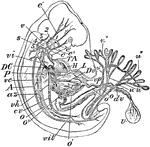
Human Embryo
"Early Human Embryo, giving diagrammatically the principal vessels antecedent to the establishment of…

Front View of the Body
The position of the organs of the mouth, thorax, and abdomen. 1, 2, and 3: Salivary glands. 4: The larynx…
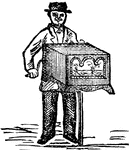
Hand-organ
A portable organ played by means of a cylinder set with pins and staples, and turned with a crank.
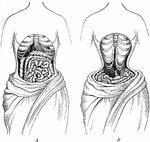
The Natural Position Compared to the Deformed Position of the Internal Organs
A, the natural position of the internal organs. B, when deformed by tight lacing. The liver and stomach…

View of Organs from the Side
The chief organs of the body from the side. Labels: a, arch of the aorta or main artery of the trunk;…

The Peritoneum
The peritoneum is a large serous membrane, which forms in the male a closed sac, the parietal layer…

Side View of the Body
A side view of the two great cavities of the body and their organs. 1: The mouth. 2: The thorax. 3:…

Section Across the Forearm
Diagram showing the position of the thoracic and abdominal organs. labels: 1, lower border of right…

Torso
The human torso. Labels: A, the heart; B, the lungs drawn aside to show the internal organs; C, the…
